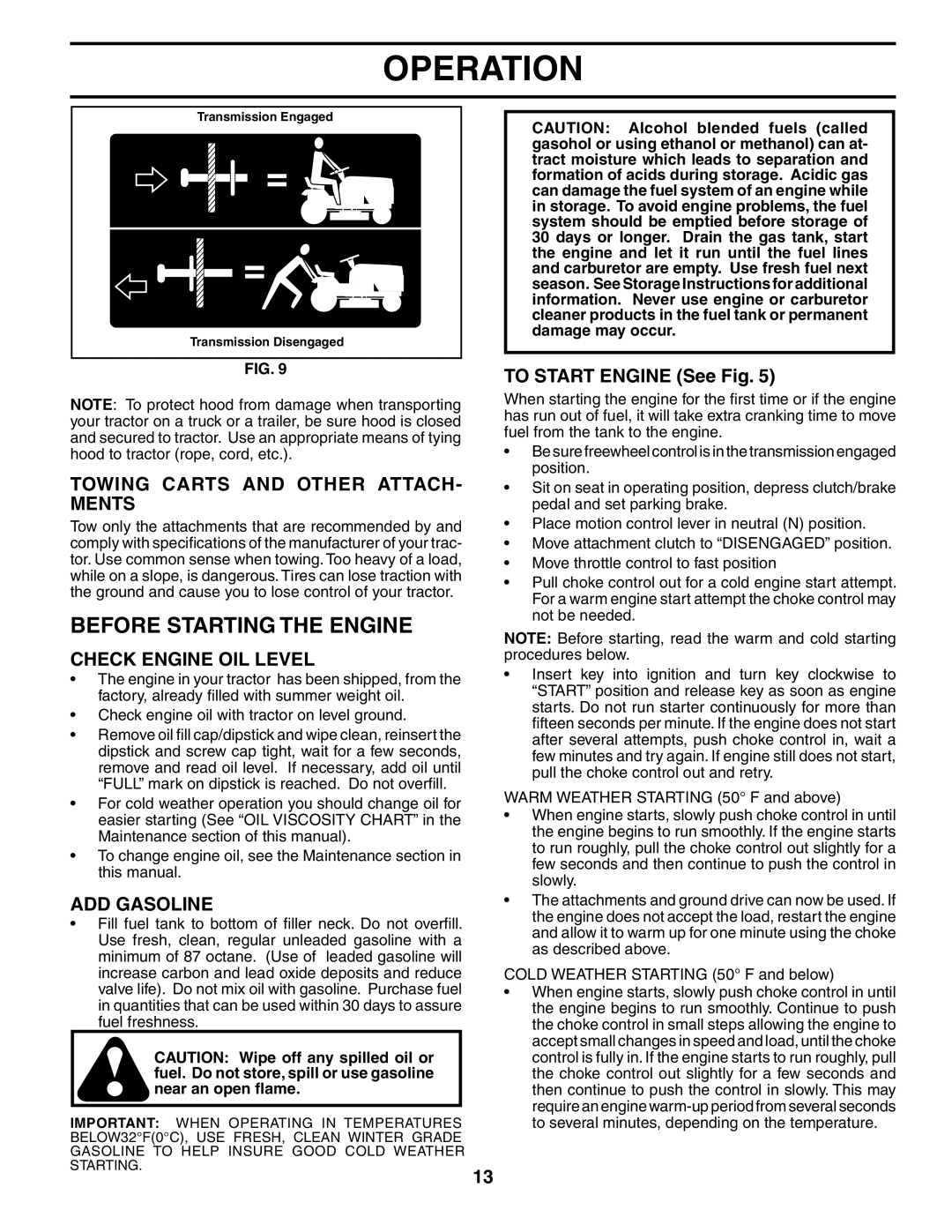PD20H42STA specifications
The Poulan PD20H42STA is a standout model in the realm of residential riding lawn mowers, designed to deliver exceptional performance for homeowners looking to maintain their lawns with ease. With a robust 20-horsepower Briggs & Stratton engine, the PD20H42STA provides ample power to tackle various terrain types, making it suitable for lawns of all sizes. The engine is designed for reliability and ease of starting, ensuring that homeowners can get to work without delay.One of the key features of the Poulan PD20H42STA is its 42-inch cutting deck, which is ideal for efficiently trimming large areas without compromising maneuverability. The deck is crafted from durable steel, enhancing its longevity and resistance to wear and tear. This wide cutting deck can also be adjusted to several cutting heights, ranging from one to four inches, allowing users to customize their mowing experience based on their lawn's specific needs.
The PD20H42STA employs an innovative hydrostatic transmission system, which provides smooth and effortless speed control. This feature allows operators to accelerate and decelerate seamlessly, enhancing the overall mowing experience. The pedal-operated system eliminates the need for shifting gears, making it user-friendly for both experienced and novice riders.
Ergonomics and comfort have also been prioritized in the design of the Poulan PD20H42STA. The plush, high-back seat provides excellent support for extended mowing sessions, while the easy-to-reach controls ensure that users can operate the mower without straining. Additionally, the model includes a tight turning radius, allowing it to navigate around obstacles with precision.
Another notable characteristic of the PD20H42STA is its versatility. It supports various attachments and accessories, such as baggers, mulchers, and snow blades, making it a multifaceted tool for year-round lawn care and landscaping needs. This adaptability enhances its value and utility for homeowners seeking to maximize their investment.
In summary, the Poulan PD20H42STA is engineered for performance and practicality, making it an excellent choice for any homeowner looking to simplify lawn maintenance. With its powerful engine, durable construction, user-friendly features, and versatile capabilities, it stands out as a reliable lawn care solution that combines comfort with efficiency, ultimately leading to a beautifully manicured yard.

